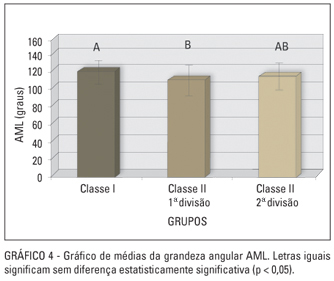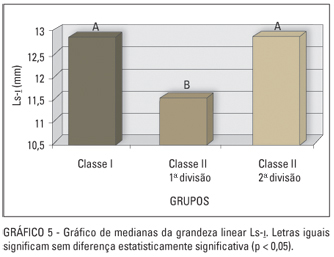AIM: The present study compared some cephalometric measurements related to facial characteristics in patients having Class I, Class II division 1, and Class II division 2 malocclusions. METHODS: One hundred and thirty teleradiographs of Caucasian patients aged 10-16 years (mean age of 12.6 years) under initial orthodontic treatment were selected for study and divided into 3 groups. The cephalometric measurements used in the present study were the following: ANB, ı-SN, IMPA, AML, Ls-ı, Li-ī, and EI. Variance analysis and Tukey's test were carried out for ANB, IMPA, AML, ı-SN, and Li-ī measurements, whereas Kruskal-Wallis and Dunn's tests were used for EI and Ls-ı. RESULTS: Statistically significant differences were found for EI and Ls-ı measurements when Group II-1 was compared to Group I and Group II-2 (p < 0.05). ANB and IMPA measurements also had statistically significant differences when Group I was compared to Group II-1 and Group II-2 (p < 0.05). The measurement ı-SN had statistically significant differences between the 3 groups (p < 0.05). CONCLUSIONS: One can conclude that the measurement ı-SN was found to be capable of differentiating the 3 types of malocclusions, whereas measurement IMPA showed that lower incisors have a variable axial behavior regarding their osseous bases. Based on the AML, EI and Ls-ı measurements, Class II division 1 malocclusion was found to have facial characteristics which differentiate it from Class II division 2 and Class I malocclusions. Class II division 1, Class II division 2, and Class I malocclusions did not show different facial characteristics regarding the measurement Li-ī.
Malocclusion; Cephalometry; Angle's classification

 Cephalometric characteristics of patients with Angle Class I and Class II malocclusions
Cephalometric characteristics of patients with Angle Class I and Class II malocclusions







